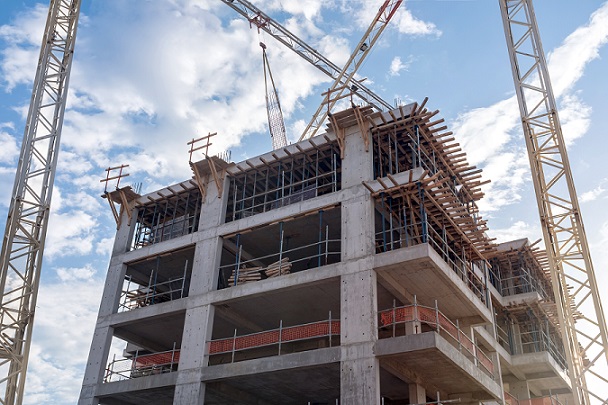With everything from travel to education to sports leagues to large public gathering being affected by the spread of the coronavirus, the construction industry was bound to take a hit sooner or later. In an industry already beset by labor shortages, the coronavirus is sure to make things even worse as workers fall ill while many have already decided to stay home due to concerns over their health and that of their families. In addition, many commercial construction companies find themselves in a strange gray zone as the industry straddles the line of being considered essential in some areas and nonessential in others.
How Essential is Construction?
The construction industry faces greater challenges in this uncertain climate because their labor force is often employed on a daily or per job basis. Therefore, they don’t have any of the worker protections common to other industries such as sick leave and paid time off. The basic problem is figuring out whether construction work should continue during the coronavirus crisis. To make matters worse, it seems that cities and states can’t really agree on this subject either.
Cities and States Draw Up Their Own Sets of Rules
Since the federal government has declined to set forth policy regarding the construction industry, cities and states have drawn up their own guidelines. For example, in mid-March, the mayor of Boston ordered all construction projects to cease in order to curb the spread of the virus, the first move of its kind in the nation. A few days later, a similar order was handed down in the state of Pennsylvania. Around the same time, New York City put a stop to all non-essential construction within the five boroughs.
On the other hand, California Gov. Gavin Newsom’s March 19 executive order enjoining all residents to remain home included exceptions for essential workforce, which identified construction workers. As a result, there are plans to use thousands of construction workers within the state to retrofit hospitals, buildings and hotels in response to the outbreak.
Commercial Construction Falls into Gray Zone
While few people debate the importance of businesses like grocery stores and hospitals remaining open, others, like construction, seem to fall somewhere in between essential and nonessential. Some industry groups argue that the nationwide housing shortage means that construction simply cannot shut down. Furthermore, states continue to have difficulty defining what is essential as the crisis evolves. New York, for instance, initially regarded construction as an essential business. However, at the end of March, Gov. Cuomo stipulated that only work on roads, bridges, transit facilities, utilities, hospitals or health care facilities, affordable housing, and homeless shelters would be considered essential.
Naturally, the industry is pushing for a federal-level designation of construction as an essential business. In the meantime, workers and contractors are caught in the middle between fearing for their safety and the need for a steady paycheck. To add insult to injury, many businesses are also weighed down by contractual obligations.
A Lack of Supplies
Even if all projects could go ahead as scheduled, COVID-19 has caused disruptions in the supply chains on which large-scale commercial contractors depend. Because the Chinese government has closed factories throughout the country, U.S. builders who source everything from stone and steel to millwork and plumbing fixtures from China will be directly affected.
Some industry experts estimate that approximately 30% of all U.S. building product imports come from China. Some construction firms, however, get as much as 80% of their materials from China because of the lower costs. Consequently, large home builders such as Toll Brothers are already experiencing material shortages. Builders may have no choice but to turn to alternative suppliers in the U.S. or other countries which haven’t had the same kind of supply chain interruptions. Nevertheless, this could still lead to delays and higher costs across the industry.
How is the Industry Responding?
In an effort to keep their employees safe, some companies have shifted to doing as much at-home work as possible. For instance, one company has decided to cut back their onsite work and move into online training to work on their professional skills. Subsequently, at least half of their superintendents are taking OSHA classes online. As a result, they can keep their employees healthy while making sure they are more skilled and better trained when they return to job sites.
While deciding whether or not to go to work may be ultimately a personal choice, the commercial construction industry faces the same type of uncertainty that many other industries are confronting on account of the coronavirus. As the disease continues to spread, the industry will continue to shift and hopefully see more relief from congress as well. For the time being, contractors know they need to tread carefully amidst a climate in which no one really knows how long shutdowns will last and what state the industry will be in once the crisis wanes.




